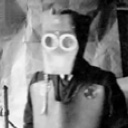- Home
- Products
- Resources
- About Us
- Core Material
- Contact Us
 Loading
Loading
 Loading
Loading

This second article in the “lead apron” series will focus on the underlying physics concepts that are relevant to protective garment performance. To understand what differentiates the performance characteristics of one protective garment from another it is necessary to understand how the materials incorporated within the apron attenuate the x-ray radiation. So, although this article will delve into the more technical aspects of lead aprons (please refer to the glossary at the end of the article for explanation of the terms and units used), understanding the underlying concepts will be useful in assisting you when interpreting the labelling and marketing material associated with them.
When diagnostic x-ray radiation passes through a medium, the two key interaction processes that can occur are Compton scattering and photo-electric absorption.
Compton scattering is depicted in Figure 1 and occurs when the energy of the x-ray photons is significantly higher than the energy that binds electrons to an atom. In a Compton interaction, the incoming x-ray photon will scatter off a loosely bound electron, and continue on in some direction with a diminished amount of the energy until it undergoes further interactions, or leaves the medium. The energy lost by the photon is imparted to the ejected electron as kinetic energy.

The photo-electric interaction is depicted in Figure 2 and occurs when the energy of the x-ray photons is just above the binding energy of electrons in an atom. In a photo-electric interaction, the incoming x-ray photon is completely absorbed, and ejects a tightly bound inner shell electron from the atom. The atom’s other electrons will then redistribute themselves, resulting in the emission of fluorescence x-rays in a high proportion of cases. As for the Compton scattered x-ray, the fluorescent x-ray will then undergo further interactions, or leave the medium.

In the context of diagnostic imaging, soft tissue is comprised mainly of the low atomic number elements hydrogen, carbon, and oxygen (atomic numbers 1, 6, and 8 respectively). The electron binding energies for these light elements is low, and so the Compton interaction dominates when diagnostic x-rays pass through soft tissue. In conventional radiography and fluoroscopy, the Compton interaction is of little benefit – it deposits dose in the patient, and the Compton scattered photons that exit the patient and reach the image receptor reduce image contrast.
In bone, the presence of significant amounts of phosphorous and calcium (atomic numbers 15 and 20) means that photo-electric interactions dominate over Compton interactions. This is the reason x-rays can be used to delineate bone within soft tissue – the combination of higher density, and higher atomic number means the bone absorbs and scatters more radiation, and effectively casts a “shadow” on the image receptor.
Before looking at what role these interaction processes play in protective garments, it is important to understand the main metric that is used to describe the protective ability of a lead apron. The metric is known as lead equivalence. For a particular material, its lead equivalence can be defined as the thickness of pure lead that is required to produce the same measured ratio of attenuation of an incident radiation beam as the test material. Figure 3 below illustrates this point.

There is some discussion concerning the merit of lead equivalence as a metric for protection. Its use traces back to the historical use of lead in garments, but there is nothing intrinsically special about lead beyond this. Lead equivalence does provide a simple index that most people in the industry are familiar with. It is widely recognised that in round terms, an apron with a lead equivalence of 0.25 mm Pb is suitable for lower energy radiation sources, and light duty use. For higher workloads or x-ray energies, a 0.35 mm Pb, or even 0.50 mm Pb apron will afford the appropriate amount of protection. In this regard, it is a simple and convenient measure, even if the actual lead equivalence doesn’t provide explicit information about the level of protection. The process of measuring lead equivalence and relating this to actual wearing conditions is a topic in its own right, and the methods used will be discussed in the next apron article.
Returning to aprons, the photo-electric interaction probability increases sharply as the atomic number of the element increases, and so in terms of providing the most effective attenuation, the high atomic number elements are the best. Compton scattering will occur off the substrate PVC or rubber materials used in the apron’s construction, but the photo-electric interactions with the heavy elements will dominate by several orders of magnitude. Historically, lead (atomic number 82) has been the preferred material. The reasons for this were mentioned in the first Understanding lead aprons article, namely that it is plentiful and cheap, has a high atomic number, exists as a stable pure metal which can be readily powdered, and does not react with other materials. Concerns over the environmental effects of improper disposal of lead based products, and the possibility of achieving better performance for a given weight in some circumstances mean that medium atomic number elements such as tin, antimony, barium, and tungsten are now popular as the attenuating agents in lead aprons.

To understand how the lead equivalence of the non lead materials used in an apron will behave, a plot of the absorption characteristics of lead, and antimony over the diagnostic x-ray energy range is shown below. The lines plotted in Figure 4 show what is known as the mass attenuation coefficients for the two materials. Put simply, the mass attenuation coefficient provides a measure of the interaction probability as an x-ray passes through a unit thickness of the given material. Mass attenuation data is published by the US National Institute of Standards and Technology on their website at http://physics.nist.gov/ PhysRefData/XrayMassCoef/tab3.html.
It can be seen that for both elements there is a general downward trend as the energy of the x-rays increases. In other words, as the x-ray energy increases the x-rays become more penetrating. The discontinuities that occur at around 15 keV and at 88 keV for lead represent the transitions where the x-ray energy matches the binding energy of the inner most shells of electrons (in this case the L and K shells respectively), so that photo-electric interactions are suddenly far more likely to occur. In the case of antimony, the K-shell discontinuity occurs at 30 keV – considerably below the 88 keV of lead due to its lower atomic number (51 compared to 82). These features combine to provide three distinct regions of interest in terms of lead equivalence – the one below 30 keV where the mass attenuation coefficient of lead is greater than antimony, the region between 30 keV and 88 keV where the antimony is greater, and above 88 keV where lead is greater again.
From the point of view of protection, if the bulk of the x-ray spectrum sits in the region between 30 and 88 keV, then elements like antimony offer the possibility of providing better attenuation for the same mass of material. Conversely, if the spectrum moves significantly to the left (lower kV), or right (higher kV), then lead offers better performance. It follows that this behaviour with x-ray energy will be reflected in the lead equivalence results as the energy of the test x-ray beam is varied.
An example of some lead equivalence measurement data is shown in the plot on Figure 5 for a non lead garment with a stated lead equivalence of “0.5 mm Pb”. Consistent with the discussion above, it can be seen that the maximum lead equivalence of 0.50 mm occurs for an x-ray tube voltage of around 90 kV, and drops either side of this as the x-ray spectrum covers more of the region outside the 30 – 88 keV range.

Given that lead equivalence behaves in this general way for all non lead or low-lead garments, when considering what apron is appropriate for a given task, it is important to understand what the lead equivalence is over the entire range of energies likely to be encountered. For example, in interventional and fluoroscopic procedures, the primary source of radiation exposure to an operator is from patient scatter, and given the typical kVs used, the nonlead garments can provide a good level of protection for their weight. If the energies being encountered are higher, for example, in cases such as an “in-room CT-assist” procedure, or nuclear medicine procedure involving Tc-99m, then a lead apron is more likely to offer better protection for a given weight since its lead equivalence remains constant.
Ideally, the garment labelling should provide a clear statement of the lead equivalence, and over what range of kVs it is applicable
Ideally, the garment labelling should provide a clear statement of the lead equivalence, and over what range of kVs it is applicable. In a lot of cases, only the peak lead equivalence value is provided, and perhaps the kV at which it was measured. This leaves the prospective purchaser with no useful information about what happens at other energies. New standards that have been published are more prescriptive around labelling requirements, and this will hopefully improve the situation in time. In the meantime, if there is any doubt about interpreting the labelled lead equivalence of an apron, then advice should be sought from a radiation protection officer, or medical physicist.
Binding energy – the energy that is required to separate an electron from its parent atom.
Electron shells – the electrons within an atom are arranged in shells like the layers of an onion. The inner most shell of electrons has the highest binding energy, with each shell further out having a progressively reduced binding energy.
keV – kiloelectron-volt. The electron-volt is a unit of energy commonly used when describing the energy of x-rays and electron binding energies. An x-ray tube connected to a generator with its kilovoltage set to 80 kV will produce a spectrum of x-rays with energies up to 80 keV. At 100 kV, x-rays with energies up to 100 keV are produced, and so on.

by Dr. Johnny Laban

by Dr. Johnny Laban

by Dr. Johnny Laban

by Dr. Johnny Laban